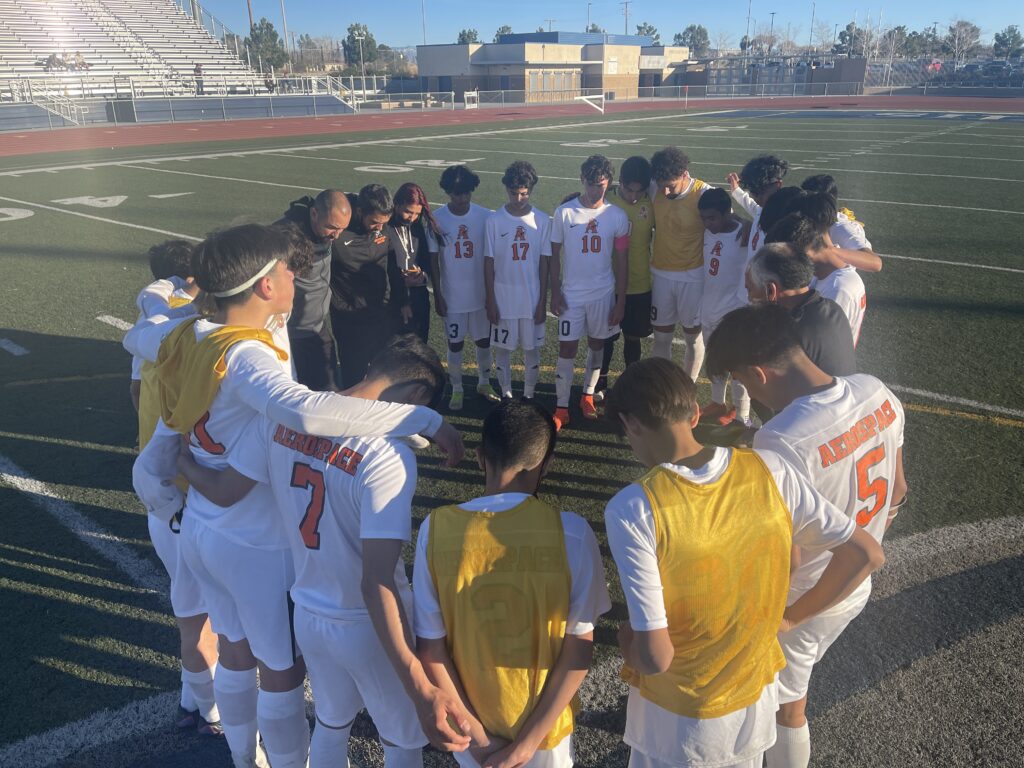
As a Principal, I made sure to build Team Chemistry by simple ways, like having food trucks come to campus during PD days so that teachers didn't have to leave campus to get food. Result? They all sat together during lunch.
I coached football for 17 years here in Southern California. 16 at the high school level, and my last one at the JUCO level. I was a Head Coach for 8 of those 16 years. So, 17 years as a coach, and 4 years on a high school football team as a member. More than 20 years spent working on a football team, then 2 years as a Varsity baseball coach, and 12 years as an Athletic Director/Administrator. I’ve seen a lot of teams!
There is NO doubt in my mind that the single most important thing that successful teams have is TEAM CHEMISTRY!
You and I have both seen more talented teams lose games and even championships to less talented teams because of TEAM CHEMISTRY.
Team chemistry is the invisible glue that binds individuals into a unified, high-performing unit.
It’s the sense of trust, camaraderie, and shared purpose that transforms a group of people into a true team. Whether in sports, business, or any collaborative setting, strong team chemistry can elevate performance, foster resilience, and create a positive environment where everyone thrives. Below are 12 proven strategies to build team chemistry, each designed to strengthen bonds, align goals, and create a sense of belonging.
1. Elicit Team Member Input for Goal Setting
Involving team members in setting team goals fosters a sense of ownership and commitment. When individuals contribute to the goal-setting process, they feel their voices matter, making the goals personal and meaningful. This buy-in increases motivation and accountability. For example, a sales team might collectively decide on a quarterly target, ensuring everyone feels invested in the outcome.
2. Establish Team Goals in a Collaborative Meeting
Hold a dedicated team meeting to establish goals, encouraging open dialogue and input from all members. This collaborative approach ensures goals reflect the team’s collective vision while addressing individual perspectives. A facilitator can guide the discussion to keep it productive, ensuring every voice is heard and the goals are clear, measurable, and aligned with the team’s purpose.

3. Develop Roles for Team Success
Clearly defined roles enhance a sense of “belongness” by giving each member a specific purpose within the team. When individuals understand their contributions and how they fit into the bigger picture, they feel valued and connected. For instance, in a project team, roles like coordinator, researcher, or presenter can be assigned based on strengths, reinforcing each member’s importance.
4. Foster Pride in Individual Roles
Encourage team members to take pride in their specific roles. Highlight the unique value each role brings to the team’s success. For example, a software development team might celebrate the meticulous work of quality assurance testers, reinforcing their critical contribution to the final product. Recognizing and celebrating these roles builds confidence and strengthens team cohesion.
5. Build Team or Unit Pride
Create symbols of team or unit pride, such as shirts, logos, or names for position groups. For example, a marketing team might name their creative unit “The Idea Factory” and design custom shirts for members. These tangible symbols foster a sense of unity and shared identity, making team members feel part of something special.
6. Set Challenging Goals to Drive Effort
Challenging goals inspire effort and focus, pushing the team to grow together. Set specific, ambitious goals for practices or projects that align with desired aspects of team chemistry, such as collaboration or communication. For instance, a sports team might aim to improve passing accuracy by 10% during practice, encouraging teamwork and mutual support to achieve the target.

7. Establish a Group Identity and Norms
A strong group identity, built on shared values and norms, creates a cohesive team culture. Define what the team stands for—whether it’s resilience, creativity, or inclusivity—and establish norms that reflect these values. For example, a norm of “open communication” might encourage team members to share ideas freely, reinforcing trust and collaboration.
6 Ideas For Building Team Chemistry
Team Chemistry: The Most Overlooked Key To Success
4 Non X and O Training Camp Outcomes – Part 4 – Team Chemistry
4 Non X and O Training Camp Outcomes – Part 2 – Parents
4 Non X and O Training Camp Outcomes – Part 3 – Admin Support
8. Foster Relationships and Commonalities
Strong interpersonal relationships are the backbone of team chemistry. Encourage team members to discover common interests and build connections outside their immediate roles. Team-building activities, like group outings or icebreaker games, can help. Avoid cliques by mixing groups during activities, ensuring everyone feels included and connected.
9. Encourage Helping Behaviors
Psychological research shows that helping others strengthens the helper’s sense of connection more than the recipient’s. Create opportunities for team members to support one another, such as mentoring, peer coaching, or collaborative problem-solving. For example, a senior team member might guide a newer colleague, fostering trust and mutual respect.
10. Understand the Team Climate
Get to know “who is who” within the team to understand its climate. Identify the leaders, motivators, and quieter contributors, and observe how they interact. This awareness helps tailor strategies to enhance chemistry. For instance, recognizing a team member’s tendency to mediate conflicts can guide you to leverage their skills in resolving disputes.

11. Develop a Climate of Care
A team that cares for one another is more resilient and collaborative. Foster a culture where team members show empathy and support, such as checking in during challenging times or celebrating personal milestones. Simple gestures, like acknowledging a teammate’s hard work or offering help during a busy period, build a climate of care that strengthens bonds.

12. Know Your Individual Team Members
Take time to understand each team member’s strengths, motivations, and challenges. Regular one-on-one check-ins or informal conversations can reveal what drives them and how they prefer to contribute. This knowledge allows leaders to tailor support, assign roles effectively, and create an environment where everyone feels valued.
Putting It All Together
Building team chemistry is an ongoing process that requires intentional effort and adaptability. Start by setting collaborative goals and defining roles to give everyone a sense of purpose. Foster pride and identity through symbols and norms that unite the team. Encourage relationships, helping behaviors, and a climate of care to deepen trust and connection. Finally, stay attuned to the team’s dynamics by knowing each member and understanding the group’s climate.
The benefits of strong team chemistry are undeniable: improved performance, greater resilience, and a more enjoyable work environment. By implementing these 12 strategies, leaders can cultivate a team that is not only successful but also deeply connected, ready to tackle challenges together with enthusiasm and unity.
Chris Fore is a veteran Administrator, Athletic Director, and Head Football Coach from Southern California; he currently serves as a Principal. He has written four books and produced coaching manuals, available at EightLaces.org. Both schools where he served as Athletic Director set school records for championships won in a single school year, and were recognized for both sportsmanship and academic excellence. Fore holds a Master’s in Coaching and Athletic Administration and multiple education credentials. A Certified Athletic Administrator, he served as President of the California Coaches Association (2018–2021) and has held various other leadership roles in several different organizations. A sought-after speaker, Fore has contributed to national sports publications and appeared on radio and podcasts. He also serves as an expert witness in athletic lawsuits. Follow him on X!



